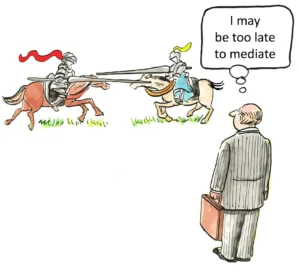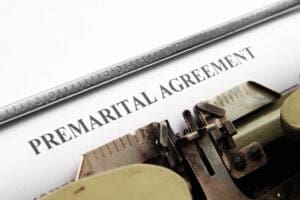How to Resolve Property Boundary Disputes
Property boundary disputes represent one of the most common and contentious issues in real estate law. When neighbors disagree about where one property ends and another begins, the resulting conflict can escalate quickly, damaging relationships and potentially leading to costly litigation. Understanding how to resolve property boundary disputes requires careful attention to legal principles, documentation, and strategic approaches that protect property rights while maintaining neighborly relations when possible.
The foundation of property ownership in America rests upon clearly defined boundaries and the right to enjoy one’s land without interference. When these boundaries come into question, property owners must navigate a complex legal landscape to assert their rights. The resolution process typically begins with research and documentation, progresses through communication and negotiation, and may ultimately require formal legal intervention if amicable solutions prove elusive.
Property disputes arise from various circumstances: unclear deed descriptions, erroneous surveys, encroachments, or misunderstandings between neighbors. The approach to resolution must be methodical and grounded in legal principles rather than emotional reactions. By understanding the legal framework governing property boundaries and following established procedures for dispute resolution, property owners can protect their investments and resolve conflicts efficiently.
Understanding Property Boundaries and Legal Rights
Property boundaries establish the legal extent of ownership rights, defining precisely where one owner’s rights end and another’s begin. These boundaries are not merely conceptual divisions but legal demarcations with significant implications for property use, development, and value. The American legal system places considerable emphasis on property rights, viewing them as fundamental to ordered liberty and economic prosperity.
The legal definition of property boundaries typically derives from deed descriptions, which may reference survey measurements, natural landmarks, or adjacent properties. These descriptions, when properly recorded, create the legal foundation for determining boundary lines. However, the precision of these descriptions varies considerably, particularly in older deeds that may reference landmarks that have since disappeared or changed. This imprecision often serves as the genesis of boundary disputes.
Property owners possess not merely the right to know their boundaries but also the right to enforce them. This enforcement right includes preventing encroachments, trespassing, and unauthorized use of one’s land. Conversely, property owners have a legal obligation to respect the boundaries of adjacent properties, refraining from actions that might infringe upon neighbors’ property rights. This reciprocal system of rights and obligations forms the legal framework within which boundary disputes must be resolved.
Common Causes of Boundary Disputes
Boundary line disagreements frequently stem from ambiguous or conflicting property descriptions in deeds and other legal documents. When property changes hands multiple times over decades or centuries, slight variations in how boundaries are described can create significant discrepancies. These documentary inconsistencies often remain undetected until a property owner attempts to make improvements near a boundary line, triggering disputes with neighbors who hold different understandings of where the boundary lies.
Physical encroachments represent another common source of boundary disputes. These occur when structures, fences, driveways, or landscaping elements cross property lines. Such encroachments may happen intentionally, but more often result from mistaken assumptions about boundary locations. Even seemingly minor encroachments, such as a fence built a few inches over a property line, can trigger significant legal conflicts, particularly when they affect property values or future development potential.
Adverse possession claims constitute a particularly contentious category of boundary disputes. Under this legal doctrine, a person who openly and continuously uses another’s land for a statutorily defined period (typically between 10-20 years, depending on state law) may gain legal title to that land. This creates situations where long-standing uses of property, even if initially unauthorized, can eventually ripen into legal ownership rights. The potential for adverse possession claims adds urgency to boundary dispute resolution, as delay in addressing encroachments may eventually result in permanent loss of property rights.
Initial Steps in Resolving Boundary Disputes
When confronting a potential boundary dispute, the prudent first step involves thorough review of all relevant property documents. This includes the property deed, title insurance policy, previous surveys, and any recorded easements or restrictions. These documents establish the legal foundation for understanding property boundaries and rights. Property owners should examine these materials carefully, noting any ambiguities or inconsistencies that might contribute to the current dispute.
After document review, open communication with the neighboring property owner often proves valuable. This communication should remain respectful and fact-based, avoiding accusations or confrontational language that might escalate tensions. Many boundary disputes result from simple misunderstandings that can be resolved through clear communication. During these discussions, property owners should focus on shared interests in resolving the dispute amicably, emphasizing the benefits of avoiding costly litigation and maintaining positive neighborly relations.
If initial communication does not resolve the dispute, obtaining a professional property survey becomes essential. Licensed surveyors possess specialized knowledge and equipment to determine precise boundary locations based on legal descriptions and physical monuments. A new survey provides current, accurate information about property boundaries, often revealing that one or both parties held misconceptions about boundary locations. While surveys involve some expense, they typically cost far less than litigation and provide objective evidence that can facilitate dispute resolution.
The Critical Role of Professional Surveys
Professional land surveys represent the gold standard for determining property boundaries with precision and legal authority. Unlike informal measurements or assumptions based on visible features, professional surveys utilize specialized equipment and techniques to establish boundaries according to legal descriptions. Surveyors research existing documentation, locate physical monuments, and apply mathematical principles to determine exact boundary locations, producing results that courts generally accept as authoritative evidence.
The survey process typically begins with comprehensive research of property records, including deeds, plats, previous surveys, and other relevant documents. Surveyors then conduct fieldwork, measuring distances and angles from established reference points and identifying physical monuments that mark boundary corners. Modern surveys often utilize GPS technology for enhanced precision, though traditional surveying methods remain important, particularly in areas with limited satellite visibility or when working with older property descriptions that reference physical features.
After completing fieldwork, surveyors prepare detailed reports and maps showing property boundaries, encroachments, easements, and other relevant features. These documents serve multiple purposes in dispute resolution: they provide objective evidence of boundary locations, identify specific areas of encroachment or dispute, and establish a factual foundation for negotiations or legal proceedings. Professional surveys also carry significant weight in court proceedings, where judges typically defer to the expertise of licensed surveyors on technical boundary determination issues.
Negotiation and Mediation Approaches
When survey results clarify boundary locations, property owners gain a factual foundation for negotiated solutions. Effective negotiation requires focusing on interests rather than positions, exploring options that address both parties’ concerns. For instance, if a survey reveals that a fence encroaches on neighboring property, the parties might negotiate an easement allowing the fence to remain in exchange for compensation or other concessions. Such negotiated solutions often prove more satisfactory than court-imposed remedies, as they can be tailored to the specific circumstances and preferences of the parties involved.
If direct negotiations stall, property dispute mediation offers a structured alternative that preserves the parties’ decision-making authority while providing professional guidance. Mediators, often attorneys with real estate expertise, facilitate discussions between disputing neighbors, helping them identify common ground and explore creative solutions. Unlike judges, mediators cannot impose decisions, but they can help parties overcome communication barriers and emotional reactions that might otherwise prevent resolution. Mediation typically costs significantly less than litigation while yielding higher satisfaction rates among participants.
Successful negotiation or mediation often results in a boundary line agreement that formalizes the resolution. These agreements describe the agreed boundary location, address any existing encroachments, and establish rights and responsibilities going forward. To ensure legal effectiveness, boundary agreements should be drafted by qualified attorneys, properly executed by all affected property owners, and recorded with the appropriate county office. Recording the agreement provides notice to future owners and prevents the dispute from recurring when properties change hands.
Legal Remedies for Boundary Disputes
When informal resolution methods prove unsuccessful, property owners may need to pursue formal legal remedies through the court system. The most common legal action for resolving boundary disputes is a quiet title action, which asks the court to determine the precise location of the boundary and declare the respective ownership rights of the parties. These actions derive their name from their purpose: to “quiet” or eliminate any disputes or challenges to the property title by establishing clear ownership boundaries.
Quiet title actions involve formal legal procedures, beginning with filing a complaint that identifies the disputed property and the legal basis for the plaintiff’s claim. The defendant receives formal notice and opportunity to respond, after which both parties engage in discovery—exchanging relevant documents, conducting depositions, and gathering evidence to support their positions. Expert witnesses, particularly professional surveyors, often play crucial roles in these proceedings, providing technical testimony about boundary locations based on deeds, surveys, and physical evidence.
Courts resolve boundary disputes by applying established legal principles to the specific facts presented. These principles include giving effect to the original intent of property conveyances, recognizing boundaries established by agreement or long use, and applying doctrines such as adverse possession or boundary by acquiescence when appropriate. The court’s final judgment establishes the legal boundary location with binding effect on current and future owners. While litigation provides definitive resolution, it typically involves significant expense, delay, and relationship damage, making it generally advisable only after other resolution methods have failed.
Understanding Adverse Possession Claims
The doctrine of adverse possession represents one of the most consequential legal principles in boundary dispute cases. This doctrine permits a person to gain legal title to another’s land by openly possessing it without permission for a statutorily defined period, typically between 10-20 years depending on state law. For adverse possession to succeed, the possession must generally be actual, open and notorious, exclusive, continuous, and hostile (without the owner’s permission). This doctrine reflects the legal system’s preference for productive land use and settled expectations over dormant ownership claims.
Adverse possession claims frequently arise in boundary dispute contexts when structures, fences, or other improvements have existed across property lines for extended periods. For example, if a fence was erroneously placed two feet over a boundary line and remained unchallenged for the statutory period, the encroaching neighbor may acquire legal title to the disputed strip through adverse possession. This potential outcome creates significant incentive for property owners to address boundary encroachments promptly rather than allowing them to continue unchallenged.
Defending against adverse possession claims requires understanding the specific requirements under state law and gathering evidence to demonstrate that one or more elements have not been satisfied. For instance, if the true owner granted permission for the encroachment, this would defeat the “hostile” element required for adverse possession. Similarly, if the possession was not continuous throughout the statutory period, this would prevent the adverse possession claim from succeeding. Property owners facing potential adverse possession claims should consult with experienced real estate attorneys to develop appropriate defense strategies based on the specific facts and applicable state law.
Boundary Agreements and Easements
Boundary line agreements provide a formal mechanism for resolving disputes without court intervention. These agreements document the parties’ mutual understanding of the boundary location, typically based on survey evidence, and may address existing encroachments or other boundary-related issues. To be legally effective, boundary agreements must be in writing, signed by all affected property owners, and recorded with the appropriate county office. Once recorded, these agreements bind not only the current owners but also their successors, providing permanent resolution to the boundary question.
In situations where strict boundary enforcement would create hardship, easement agreements offer an alternative solution. Easements grant limited rights to use another’s property for specific purposes without transferring ownership. For example, if a driveway encroaches on neighboring property, the parties might create an easement allowing continued use of the driveway while acknowledging the true boundary location. This approach balances respect for legal boundaries with practical considerations about existing improvements and established uses.
Both boundary agreements and easements should be carefully drafted by qualified attorneys to ensure they accomplish the parties’ intentions and comply with legal requirements. These documents must include precise descriptions of the affected property, clear statements of the rights granted or boundaries established, and proper execution formalities. While preparing these documents involves some expense, they typically cost far less than litigation while providing greater certainty and flexibility in addressing the specific circumstances of the dispute.
Preventing Future Boundary Disputes
Preventing boundary disputes begins with thorough due diligence when purchasing property. Prospective buyers should review property descriptions carefully, obtain current surveys before closing, and resolve any boundary uncertainties before completing the purchase. Title insurance with survey coverage provides additional protection, potentially covering legal expenses if boundary disputes arise despite proper due diligence. These preventive measures require modest investment compared to the potential costs of resolving boundary disputes after they emerge.
For existing property owners, maintaining clear boundary demarcations helps prevent disputes from arising. This includes preserving survey monuments, maintaining fences or other boundary markers in their correct locations, and promptly addressing any potential encroachments. When making improvements near property lines, obtaining a survey beforehand and communicating with neighbors about planned work can prevent misunderstandings that might otherwise lead to disputes. These proactive steps reflect the adage that an ounce of prevention equals a pound of cure.
Formal documentation of boundaries and understandings with neighbors provides additional protection against future disputes. When questions or minor issues arise, documenting discussions and agreements in writing, even informally, creates a record that can prevent later misunderstandings. For more significant matters, creating and recording proper legal documents such as boundary agreements or easements establishes clear rights and responsibilities that bind future owners. This documentation proves particularly valuable when properties change hands, as new owners may lack the historical knowledge and relationships that previously prevented disputes from arising.
Legal Considerations in Specific Boundary Scenarios
Fence disputes represent perhaps the most common boundary conflict scenario, arising when fences are built on or near property lines. The legal analysis in these cases considers several factors: the fence location relative to the true boundary, how long the fence has existed, whether it was built with the neighboring owner’s knowledge or consent, and whether its location has been treated as the actual boundary by the parties’ conduct. In some jurisdictions, the doctrine of “boundary by agreement” or “boundary by acquiescence” may legally establish a fence line as the boundary when the parties have treated it as such for an extended period, regardless of the boundary described in deeds.
Water boundaries present unique legal challenges due to their naturally changing character. When property borders streams, rivers, or lakes, boundaries may shift over time through processes of accretion (gradual addition of land) or avulsion (sudden change in water course). Generally, boundaries shift with gradual, natural changes but remain fixed when changes occur suddenly or through artificial means. These principles create complex legal questions requiring specialized knowledge of riparian or littoral rights, highlighting the importance of expert legal counsel in water boundary disputes.
Easement disputes frequently intersect with boundary issues, particularly regarding rights-of-way for access or utilities. These disputes may involve questions about the existence, scope, or location of easements, often requiring interpretation of easement language in deeds or other recorded documents. Courts typically construe express easements according to the parties’ original intent while implying necessary easements by operation of law in certain circumstances, such as landlocked parcels requiring access. Resolution of easement disputes often requires balancing the easement holder’s rights against the property owner’s interest in minimizing burden on their land.
The Role of Title Insurance in Boundary Disputes
Title insurance policies provide valuable protection against certain boundary-related risks, though coverage limitations require careful attention. Standard owner’s title policies typically insure against losses arising from title defects, including some boundary issues, but often contain exceptions for matters that would be revealed by accurate survey. For comprehensive protection, property owners should consider purchasing extended coverage policies and specific survey endorsements that provide protection against boundary discrepancies not shown in public records.
When boundary disputes arise, title insurance may cover legal defense costs and potential losses, depending on policy terms and the specific nature of the dispute. Policyholders should promptly notify their title insurer upon discovering potential boundary issues, as policies typically require timely notice and cooperation with the insurer’s defense efforts. The insurer may then investigate the claim, provide legal defense, negotiate settlement, or compensate the insured for covered losses, depending on the circumstances and policy provisions.
Understanding title insurance coverage limitations proves essential for property owners facing boundary disputes. Most policies exclude coverage for matters created, allowed, or agreed to by the insured, potentially including boundary agreements made after policy issuance. Similarly, matters known to the insured but not disclosed to the insurer at policy issuance may fall outside coverage. These limitations underscore the importance of thorough due diligence before property purchase and prompt attention to potential boundary issues as they arise, rather than relying solely on title insurance for protection.
Technological Advances in Boundary Determination
Modern technology has revolutionized boundary determination, with GPS (Global Positioning System) and GIS (Geographic Information System) technologies enabling unprecedented precision in property surveys. Professional surveyors now utilize GPS equipment capable of centimeter-level accuracy, dramatically improving boundary location precision compared to traditional methods. These technologies prove particularly valuable in areas with limited physical monuments or challenging terrain, allowing surveyors to establish boundaries with confidence even in difficult conditions.
Digital mapping and data integration systems further enhance boundary determination by combining survey data with other relevant information, including aerial imagery, topographic data, and public records. These integrated systems allow visualization of property boundaries in their physical context, helping identify potential discrepancies or encroachments that might not be apparent from survey measurements alone. For property owners, these technological advances provide clearer understanding of boundaries and potential issues, facilitating informed decision-making in dispute resolution.
Despite these technological advances, human expertise remains essential in boundary determination. Professional surveyors must interpret legal descriptions, evaluate historical evidence, and apply legal principles to determine boundary locations correctly. Technology provides powerful tools but cannot replace professional judgment in resolving ambiguities or conflicting evidence. This reality underscores the continued importance of engaging qualified professionals in boundary matters, rather than relying solely on technology-based solutions or amateur interpretations of property records.
Emotional and Practical Aspects of Boundary Disputes
The emotional dimensions of boundary disputes often equal or exceed their legal complexity. Property ownership carries deep psychological significance for many Americans, representing not merely financial investment but also personal identity, security, and autonomy. Perceived boundary violations may trigger strong emotional responses rooted in feelings of territorial invasion or disrespect, potentially transforming minor physical encroachments into major relationship conflicts. Recognizing these emotional dynamics proves essential for effective dispute resolution, particularly in residential contexts where ongoing neighbor relationships hold importance.
Practical considerations also significantly influence boundary dispute resolution. The financial value of disputed land often pales in comparison to the costs of formal legal proceedings, creating situations where principled vindication of property rights might not align with economic rationality. Similarly, the time and stress associated with prolonged disputes impose real costs on participants, potentially affecting health, productivity, and quality of life. These practical realities often motivate compromise solutions that might not perfectly align with strict legal rights but better serve the parties’ overall interests.
Balancing legal rights with emotional and practical considerations requires thoughtful approach to dispute resolution. This may include separating people from problems through respectful communication, focusing on interests rather than positions, exploring creative options that address multiple concerns, and evaluating potential solutions against objective criteria. Professional mediators excel in facilitating this balanced approach, helping parties navigate both legal and emotional aspects of boundary disputes to reach sustainable resolutions that preserve relationships and avoid unnecessary costs.
Special Considerations for Commercial Properties
Boundary disputes involving commercial properties present distinct challenges and considerations compared to residential contexts. The financial stakes typically rise substantially, with even small boundary discrepancies potentially affecting development potential, parking capacity, access routes, or compliance with zoning requirements. These heightened financial implications often justify more extensive investment in precise surveys, thorough legal analysis, and formal dispute resolution processes than might be warranted in residential disputes.
Commercial property boundary disputes frequently involve multiple stakeholders beyond the immediate property owners, including tenants, lenders, insurers, and local government entities. These additional parties may hold legal interests in the property boundaries through leases, mortgages, insurance policies, or regulatory oversight. Effective resolution requires identifying all stakeholders with legitimate interests and addressing their concerns appropriately, potentially through multi-party negotiations or formal legal proceedings that join all necessary parties.
The regulatory dimension of commercial property boundaries adds further complexity to dispute resolution. Zoning requirements, setback rules, parking regulations, and other land use controls often depend on precise boundary locations, creating potential compliance issues when boundaries come into question. Resolving these disputes may require coordination with local planning departments or zoning boards in addition to addressing the private property rights of the disputing owners. This regulatory overlay highlights the importance of specialized legal counsel with expertise in both real estate and land use law when handling commercial boundary disputes.
The Impact of State Law Variations
State laws governing property boundaries and dispute resolution vary significantly across jurisdictions, creating important differences in how similar factual situations might be resolved in different states. These variations affect numerous aspects of boundary law, including adverse possession requirements, easement creation methods, boundary agreement formalities, and available legal remedies. Property owners must understand the specific laws applicable in their jurisdiction rather than relying on general principles or experiences from other states.
Adverse possession laws exemplify these state-by-state variations, with significant differences in required possession periods, elements of proof, and special rules for particular situations. Some states require as little as 7 years of possession under certain circumstances, while others mandate 20 years or more. Similarly, some states require the adverse possessor to have paid property taxes on the disputed land, while others impose no such requirement. These variations can determine whether an encroachment results in permanent loss of property rights or remains subject to removal regardless of its duration.
Procedural requirements for boundary dispute resolution also vary by state, affecting how property owners must proceed when seeking legal remedies. These variations include differences in statutes of limitations, court filing procedures, notice requirements, and available causes of action. Some states offer specialized procedures for boundary determination that provide more efficient resolution than general quiet title actions. Understanding these procedural requirements proves essential for property owners contemplating legal action, as failure to follow proper procedures may result in dismissal of otherwise valid claims.
Conclusion: A Strategic Approach to Boundary Resolution
Resolving property boundary disputes requires strategic approach combining legal knowledge, factual investigation, and thoughtful consideration of practical realities. The process typically begins with thorough research and documentation, proceeds through communication and negotiation efforts, and may ultimately require formal legal proceedings if amicable resolution proves unattainable. Throughout this process, property owners benefit from professional guidance from surveyors, mediators, and attorneys with specific expertise in real estate boundary issues.
The most effective resolution strategies typically emphasize early intervention, accurate information, and balanced consideration of legal rights alongside practical and relationship concerns. Professional surveys provide essential factual foundation for informed negotiations, while skilled mediation helps parties overcome emotional barriers to resolution. When litigation becomes necessary, thorough preparation and focused legal arguments based on jurisdiction-specific precedent maximize the likelihood of favorable outcomes. This comprehensive approach not only addresses the immediate boundary dispute but also establishes clear documentation and understanding to prevent future conflicts, ensuring long-term property value protection and neighborhood harmony.
Ultimately, the resolution of property boundary disputes requires patience, diligence, and often a willingness to compromise. While the legal system provides mechanisms for definitive boundary determinations, the costs—both financial and relational—of pursuing litigation to its conclusion often outweigh the benefits, particularly in residential contexts. Property owners who approach boundary disputes with a combination of assertiveness about their rights and openness to reasonable compromise typically achieve the most satisfactory outcomes.
The increasing precision of surveying technology, combined with the enduring complexities of property law, underscores the importance of professional expertise in boundary dispute resolution. As property values continue to rise in many areas, the stakes in boundary disputes correspondingly increase, making informed decision-making crucial. Property owners facing potential boundary issues should prioritize early consultation with qualified professionals to understand their rights, options, and potential strategies for resolution.
In conclusion, the process of resolving property boundary disputes intertwines legal principles, technical surveying expertise, negotiation skills, and often, a deep understanding of human psychology. By approaching these disputes with a clear strategy that balances legal rights with practical considerations, property owners can protect their interests while maintaining the cooperative relationships essential to peaceful property ownership. Whether through negotiated agreements, mediation, or formal legal proceedings, the goal remains consistent: establishing clear, enforceable property boundaries that respect legal rights while accommodating practical realities. This balanced approach not only resolves current disputes but lays the groundwork for stable, conflict-free property relations in the future, contributing to the broader stability and value of communities across America.
Citations:
- Property Line Disputes and Encroachments FAQs
- Strategies for Handling Boundary Disputes
- How to Resolve Property Boundary Disputes
- Legal Aspects of Property Boundaries
- Common Examples of Boundary Disputes
- Legal Implications of Property Disputes
- Minatoya v Mousel Case on Boundary Dispute
- Property Line Dispute Tips for Homeowners
- How to Resolve Boundary Disputes
- Common Causes of Property Boundary Disputes
- Five Common Property Disputes
- Understanding Property Line Disputes
- Avvo Legal Answers on Property Line Dispute
- Reddit Discussion on Property Line Dispute
- Expert Tips for Resolving Boundary Disputes
- Intricacies of Boundary Disputes and Resolutions
- Boundary Dispute Resolution Guide
- Reddit on Boundary Dispute Options
- Property Dispute Resolution Methods
- Tips for Resolving Property Line Disputes
- Understanding Property Disputes Legal Strategies
- Settling Boundary Disputes in Agriculture
- Top 10 Property and Boundary Dispute Articles
- Property Line and Fence Laws in Hawaii
- Evolution of Real Estate Litigation Trends
- How to Resolve Boundary Disputes
- Types and Resolutions of Boundary Disputes
- AcreValue on Property Line Disputes
- LawDepot on Property Line Disputes
- Resolving Boundary Line Issues in NC
- Navigating Property Disputes in California
- Boundary Line and Property Title Disputes
- Justia on Boundary Disputes with Neighbors
- Boundary and Property Line Disputes
- Boundary Disputes by Farah Legal
- Property Boundary Dispute in Houston
- Handling Boundary Disputes with Neighbors
- Boundary Disputes Case Study
- Common Examples of Boundary Disputes
- Evidence for Title and Boundary Disputes
- Surveys Resolving Common Boundary Disputes
- Four Types of Boundary Disputes
- How to Handle Boundary Disputes
- Statute of Limitations on Property Disputes
- Video on Property Line Disputes
- Neighbor Dispute Over Property Line
- Types of Land Disputes
- Reddit on Neighbor Property Line Dispute
- Real Estate Risk Areas to Watch 2025
- Why Boundary Disputes Are Complicated
- Property Law Developments Expected in 2025
- Land Surveyors for Boundary Disputes
- Real Estate Litigation on Boundary Disputes
- Proving Boundary of Acquiescence
- How to Win a Boundary Dispute
- LegalMatch Boundary Disputes Lawyers
- Resolving Intricacies of Boundary Disputes
- San Antonio Property Disputes Lawyer
- Washington Supreme Court Boundary Dispute Case




















